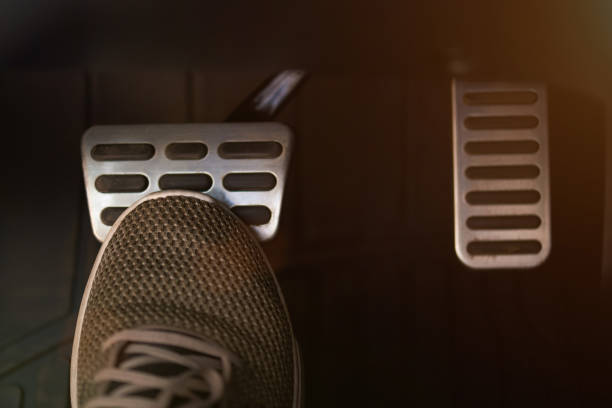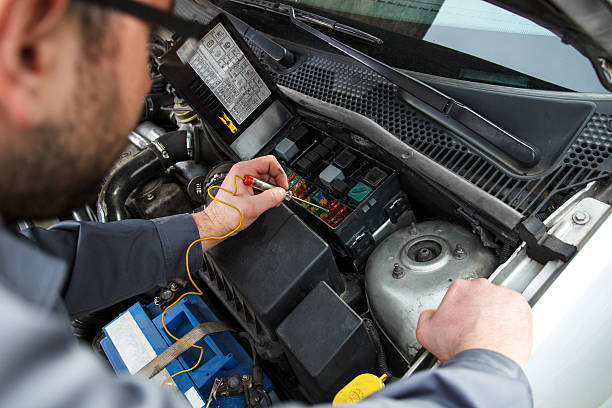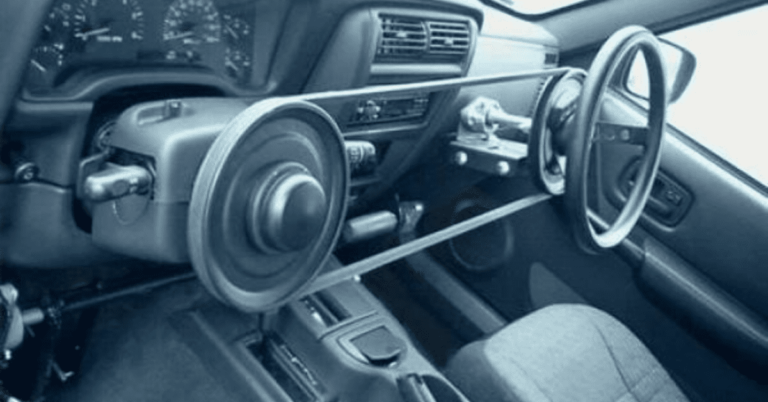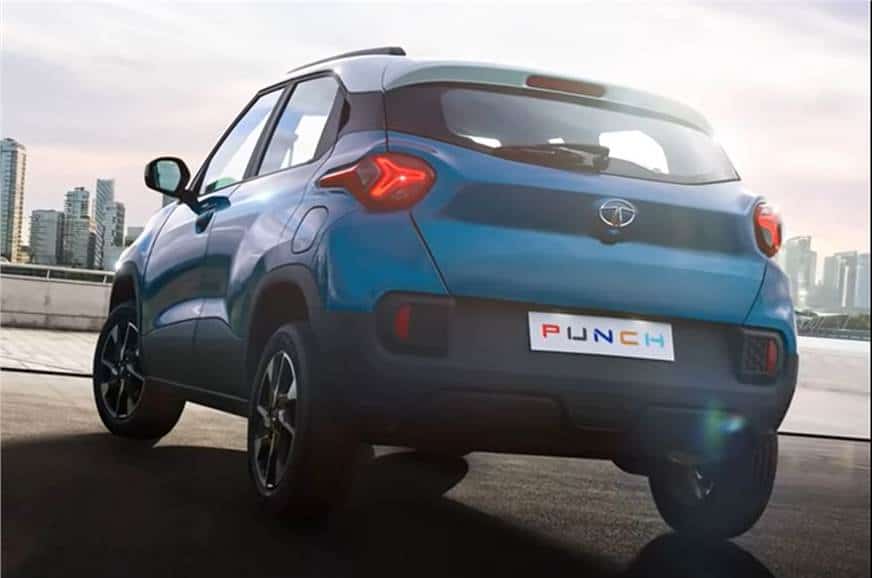
While we may be accustomed to lane departure warnings, 360-degree cameras and blind spot monitoring, we often overlook the humble brake light which is the simplest safety feature on cars. Not only are brake lights critical for warning drivers that you are coming to a stop or slowing down, but they are also a sign of courtesy to motorists travelling behind you. Brake lights give them plenty of time to stop and avoid a crash, especially in dim light, fog and at night. It is also considered a traffic offence to have faulty brake lights, so get them working if you want to avoid a ticket from authorities.
How Do Brake Lights Work?
You should test your brake lights often, especially in winter months and if you drive at night often. Ask someone to check if the brake lights illuminate when you step on the brake pedal.

Brake lights work on the car’s electrical system which consists of a brake light switch, fuse, electrical wires and brake light bulbs. Some of the common issues with brake lights is a malfunctioning brake light switch that doesn’t turn on when the brake pedal is applied. There could be problems with the electrical wires, with loose connections or corroded terminals. Fuses may blow out causing disruption in the electrical circuit. Another cause of brake light failure is burnt-out brake light bulbs with broken filaments.

When the brake pedal is applied, the brake light switch is engaged which sends an electric current through the circuit. The current flows through the fuse and then to the tail light assembly that consists of the brake light bulbs. As current flows through the bulbs, they illuminate bright red. When the brake pedal is released, the switch disengages and breaks the circuit. The current stops flowing to the bulbs and they turn off.

Click Here to Checkout Signs of Potential Brake Problems
Reasons Why Car Brake Lights Are Not Working
Brake lights are a safety feature that warns vehicles travelling behind when you are slowing down. Brake lights illuminate when you step on the brake pedal by means of an electric brake switch which sends a small current to the brake light bulbs at the rear of the vehicle. There are fuses and wire connections in between that facilitate this process.
Here are some common reasons why your brake lights may stop working.
Light bulbs
Unlike modern cars that use LEDs for headlights and tail lights, older cars use filament bulbs in brake lights. These filaments can burn out after constant use and fail to illuminate when you apply the brake pedal.
Light bulbs with burnt filaments are the most common cause of brake light failure. To inspect the bulbs, you need to take off the tail light covers and unscrew the bulb out of its socket. Hold the bulb up and check for burn marks or a broken filament. If you notice the bulb filament is faulty, replace the bulb with a new one of the same wattage and colour. This process doesn’t require professional help and you can purchase a new bulb from a car accessory store.
Read here about LED Light Bars And Their Installation Guide
Brake Light Switch
The brake light switch works like any conventional switch. When the brake pedal is applied, the brake light switch is turned on which sends an electric current to the brake lights through the fuse. When the brake pedal is released, the switch turns off and breaks the circuit. If the brake light switch is faulty, it will not send current to the brake lights. It is also possible for the brake lights to be stuck in the on or off position.
Fuse

A fuse box is used to protect the electrical circuit from power surges and malfunctions. The fuse box can be found under the hood in the engine bay or in the passenger compartment under the dashboard. Inspect the fuse for the brake light circuit by referring to the fuse box manual. If the fuse is blown, replace it with a similar fuse of the same resistance and amperage. The brake light should start working once the fuse has been replaced.
Ground Wiring
If the tail lights are working but the brake light fails to light up, it is most likely a problem with the ground wiring connections. Ground wiring could be faulty due to corroded or damaged wires. Try replacing the ground wires with one which is working and test the brake light circuit. Press the brake pedal and check if the brake light works.
Electrical Wiring
Electrical wires run from the brake light switch to the fuse box, and from the fuses to the brake light bulbs. The electrical system of the brake light has various harnesses that could get unplugged or become defective. There might be loose connections, corroded wires or damaged sockets. The electrical wiring must be intact for the brake lights to illuminate when the brake pedal is applied. Replace wires or fix connections to get them working again.
Turn Signal
The circuit that powers the turn signals is also used for the brake light circuit. Sometimes both circuits will start to malfunction and you will need to replace the wires in the system. This job is a little complicated and may require the services of an auto electrician.
Click here to know the Difference between Disc Brake Vs Drum Brake: All You Need To Know About Them
Ways to Fix a Broken Brake Light
Replacing the car brake light is a simple task which you can do at home. Get familiar with the electric wiring diagram to ensure you don’t mess up any other components.
You will need a replacement bulb of the same specifications, a screwdriver, a ratchet and safety equipment like gloves and goggles.
Disconnect the battery to avoid electrical shocks. Open the car boot to gain access to the tail light assembly. Unscrew the fasteners and slowly pull out the lens cover. Avoid disrupting any electrical wires attached to the bulbs.
Push the bulb gently and turn it anti-clockwise to release it. Inspect the bulb for burn marks or a broken filament. Replace the bulb by pushing gently and twisting clockwise into the socket. Reattach the lens cover and reconnect the battery. Check if the brake light illuminates when you apply the brake pedal.
For brake light switch replacement, you will need the help of an automotive electrician to install or repair the device. The same goes for checking the electrical system for corrosion or damage as this may involve pulling some parts of the harness to check for faults.
A fuse is easily replaced at home. Find the fuse box and check the fuse diagram to locate the position of the brake light fuse. Replace the fuse with one of the same resistance and amperage.
There you have it. You don’t have to spend on expensive service costs and labour at a mechanic if you can carry out some of these simple tasks yourself. Check your brake lights at least once a month to avoid any traffic violations or potential road hazards. You don’t want a rear-end collision on your car.
Click here to know How to replace brakes on your car?
Conclusion
Eventually, all brake lights will develop some fault in their lifetime, so you should always be prepared for the worst. Carry a spare lightbulb in your trunk in case you need to change one in an emergency.
Brake lights are an essential part of safe driving as they are intended to alert drivers of you slowing down. Although a faulty light bulb or a blown fuse is an easy fix, they could be more complicated issues in the wiring or electrical components. Ensure your brake lights are functioning properly for a hassle-free driving experience.
Be sure to read the Carorbis blog for other interesting articles such as Everything you need to know about Brake Boosters and What To Do When The Battery Light Comes On While Driving?
Frequently Asked Questions
Q1. How to Fix Brake Lights Not Working?
Ans. Inspect the electrical wiring from the brake light switch near the brake pedal to the fuse panel, and from the fuse box to the brake light bulb socket. There could be a loose connection in the wiring or the bulb socket may be corroded. Check the fuse if it is blown and replace it if required. If the brake light bulb filament has blown out, you need to replace the bulb with a new one. You can identify a blown-out bulb when it has turned black or if there is a broken filament inside. Ensure that the electrical ground connection is working.
Q2. Why Are My Brake Lights Not Working?
Ans. The common reasons for brake lights not working are a burnt-out bulb, a faulty brake light switch, a blown fuse, a corroded bulb socket or damaged wiring. Burnout bulbs can easily be replaced by new ones. A brake light switch is an electrical device that triggers the bulbs to switch on when the brake pedal is applied. It is an inexpensive component and straightforward to replace. If the brake lights are not working and the brake light switch is working, then it is probably a blown fuse. Fuses are found in the vehicle’s fuse box (use the fuse diagram to identify the brake light circuit).
Q3. Why Are Both Brake Lights Not Working?
Ans. The most likely cause of both brake lights failing is a blown fuse. Locate the car’s fuse box under the hood or in the passenger compartment. The fuse diagram will indicate the position of the brake light fuse. Identify the right fuse and check if it is blown. If it is faulty, replace the fuse with a similar one of the same resistance. Check the brake lights. In case they are still not working, you have to check the bulbs and sockets. Finally, have a look at the electrical connections to ensure they are no loose fittings.
Q4. Why Are All Brake Lights Not Working?
Ans. The reason brake lights are not working could be a faulty light bulb. Take off the tail light cover, push, and turn the bulbs counterclockwise to unfasten them. Check the filaments if they are broken, or look for blackened bulbs. Replace the bulbs with the same type. Sometimes the turn signal switch may be damaged and prevent the brake lights from working. Access the turn signal wiring and use a test light with the brake pedal engaged. Change the wire if the test light doesn’t come on.
Q5. Brake Lights Not Working but the Bulb is Good?
Ans. If the brake light bulb seems to be ok, check the bulb socket for corroded connections or loose fittings. Next, inspect the wiring, and make sure it is intact and there are no loose connections. Fuses can sometimes cause the brake lights to stop working even if the bulb is good. Finally, the brake light switch should be checked for proper functioning. Faulty brake lights can be a safety hazard as motorists behind you will not know when you are slowing down. You could even get a ticket from traffic authorities for a faulty brake light.
Q6. Brake Lights Not Working but Tail Lights Are?
Ans. Tail lights and brake lights are installed in the same housing but have different bulbs and electrical connections. The tail light switches on when you turn on the headlights or park lights, but the brake lights work only when you apply the brake pedal. Tail lights are usually a shade of red whereas brake lights are bright, luminous red to warm motorists that you are stopping. Check the electrical ground wiring if your brake lights are not working but the tail lights are fine.
Q7. Tractor Brake Lights Not Working?
Ans. Tractor brake lights work in the same way as car brake lights work. Use the same troubleshooting methods to identify and fix brake lights not working. Check the bulbs, fuses, electrical wiring connections, ground wire connections and brake light switch.
Q8. Why My Brake Lights Won’t Turn Off?
Ans. Brake lights may not turn off due to a stuck brake light switch which doesn’t disengage. Another cause could be a brake pedal that isn’t returning to neutral position once released, because of a faulty return spring. Sometimes, problems in the electrical circuit will keep the brake light illuminated without applying the brake pedal. It is a quick and easy fix which can be carried out by a certified mechanic at a service station.







